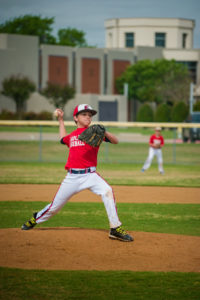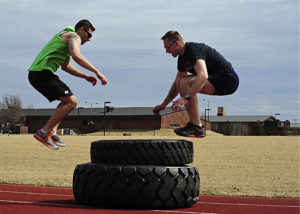In the past few years youth sports have become more competitive and financially demanding. This new focus on youth sports has led to an increasing push for participation in “sports performance” programs. There are plenty of very competent coaches who know what they’re doing and help take athletes’ performance to the next level. However, as with any industry, there are plenty of uninformed coaches whose “sports performance” programs are not well thought out or backed by science. Here are three of the most common mistakes I see in subpar sports performance programs.
Lack of Strength Work
In order to run fast, jump high, and resist injury, athletes must be strong relative to the requirements of their sport. Often, the young athletes who are encouraged to participate in sports performance programs have not built a solid base of strength yet. Therefore, they would likely see a significant benefit from some general strength work.
Rather than strength work, sports performance programs often focus on plyometrics and jumping variations. These exercises have significant ground reaction forces (GRF), which is the force exerted by the ground on a body in contact with it. The GRF during depth jumps and countermovement jumps for example, can be as high as 6.5 to 6.77 times an individual’s body weight (BW) (Donaghue et al. 2011). These movements are not ideal for young athletes who haven’t built a proper strength base yet, as GRF this high require a certain level of strength to safely accept the force.
Strength is the base on which many athletic qualities, such as power, are built. Attempting to build higher order capabilities before attaining the requisite level of strength will hinder an athlete’s long-term development.
Not Enough Rest
Often, sports performance programs will spend a majority of the time focusing on speed, change of direction, and jump performance. All of these factors require a significant amount of rest due to the fact that they all use the ATP-CP (phosphagen) energy system. This energy system requires a work to rest ratio of at least 1:10, with work periods of about 10 seconds or less. For example, when athletes are running sprints and are jogging back to immediately begin running sprints again, they are no longer running sprints, as there is no true rest period. Instead of focusing on speed, the exercise has become endurance work, and will not lead to the desired result.
The SAID principle (specific adaptations to imposed demands) tells us that the body will improve areas of performance that we actually train. In this case, in order to get faster, athletes have to actually run fast. If they aren’t adequately rested between sprints they can’t run fast, and therefore will not get faster (or at least not as fast as they could).
Lack of Individualization
Finally, subpar sports performance programs tend to be one-size-fits-all, with no individual assessments of the athletes. Assessments are important because they can give coaches an idea of the athlete’s needs and limitations to help shape the program. With large groups it’s unlikely any program will be fully individualized, but athletes with similar needs can be divided into smaller groups with slightly different program design.
All athletes have different muscle fiber profiles (percentage of type I and type II), personality types, body compositions, and lever lengths that all affect how they respond to different types of training. For example, athletes that who are more “reactive” or “springy” tend to respond well to plyometric work. But not all athletes will benefit from this type of training, and their results will suffer if they’re given the wrong type of program.
No sports performance program is perfect, but avoiding these three common mistakes can help improve the results of the athletes participating in these programs.
Resources
Photos:
“Youth Baseball at Enfield Park Plano” by Nan Palmero CC BY 2.0
“Battlefield Airmen: GFAFB Airmen work together for a common goal” by Airman st Class Ryan Sparksreleased
Donaghue O, Shimojo H, Takagi H (2011) Impact Forces of Plyometric Exercises Performed on Land and in Water. Sports Health.




